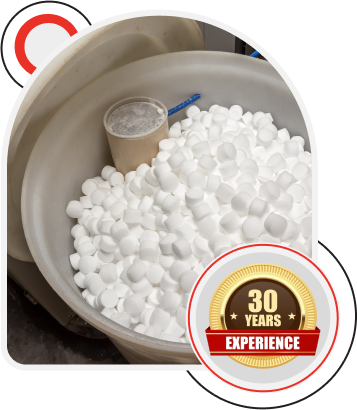Water Softener Installation in Enterprise
When the minerals in hard water interact with soap or body wash, they form soap scum. Scum can act as a barrier on your skin, preventing it from absorbing and releasing moisture. That leads to dryer skin, not to mention the irritation it can bring from simply being present.
By changing your skin’s pH balance and disrupting its barrier, it also makes it more susceptible to infections. It even makes it harder to clean your tub and shower.
That problem extends throughout your home, from laundry to dishes. The buildup of soap and minerals can make clothing feel rougher. It can also make it harder to get your laundry clean. It’s part of why you’ll often see water spots on glasses and dishware, too. A thin coating of minerals can help prevent corrosion in your plumbing. Too much, though, and it can have the entirely opposite effect.
In short, hard water can wreak havoc throughout your home. If you have hard water, you’ll notice:
- Irritated, dry skin
- Clogged pipes
- Frizzy, damaged hair
- Dandruff
- Pipe corrosion
- Damaged appliances
- Stiff, worn laundry
When it comes to water softener installation, you’ll find two primary types. The most common type is ion exchange softeners, which you fill with salt as part of the softening process. With environmental concerns in more recent years, salt-free softeners, or water conditioners, are another option, though they’re rarer. Either way, water softeners help mitigate the impact of the minerals within the water.
Water softener maintenance is important, too. Beyond regularly refilling your softening system with salt, call us for yearly checks. It’s easier to keep a water softener in good condition than it is to restore it if problems arise, for one. More importantly, those minerals do build up within your softener.
Too much buildup, and the beads in your softener will have a hard time actually softening your water. If your skin suddenly dries out or your laundry is randomly scratchy, it might be time for a maintenance appointment.

